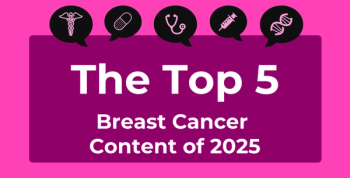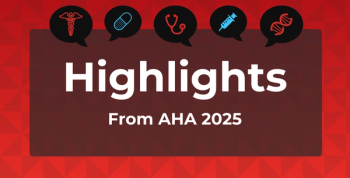
Hemodynamic Improvement Seen From Combo Treatment for PoPH
For this analysis, the Japan Pulmonary Hypertension Registry provided data from 2008 to 2021 on patients with diagnosed portopulmonary hypertension (PoPH).
Investigators found significant hemodynamic improvement among patients treated with combination therapy for
Data from 2008 to 2021 on hemodynamic changes, disease functional class, and clinical outcomes among 62 patients (median age, 51 years; n = 37 female patients) treated with monotherapy (n = 21) or a combination regimen (n = 41) for PoPH—noted to account for 5% to 16% of pulmonary arterial hypertension (PAH) cases overall—at 21 centers in Japan were analyzed; 25 of these patients were treatment naïve, which the study investigators defined as “patients undergoing their first right heart catheterization at the participating center before and after treatment.”
In addition, for this analysis, PoPH was defined to have a mean resting pulmonary arterial pressure of at least 25 mm Hg, a pulmonary artery wedge pressure of 15 mm Hg or lower, and pulmonary vascular resistance (PVR) higher than 3 Wood units. Also, combination treatment was defined as containing at least 2 PAH-specific medications.
“PoPH is one of the major underlying causes of pulmonary arterial hypertension (PAH),” the study authors wrote. “However, PoPH, especially treatment strategies, has been poorly studied.” They added that reasons for the lack of research on PoPH include that patients with the disease tend to have comorbid liver diseases and may be more easily prone to liver injury.
Among the patients whose New York Heart Association functional class increased by at least 1 class, survival rates at 3 and 5 years were 88.5% (95% CI, 76.0%-94.7%) and 80.2% (95% CI, 64.8%-89.3), respectively.
At study entry (baseline), the overall most common World Health Organization (WHO) functional class was II in 45.2%, followed by class III disease in 40.3%, class I disease in 9.7%, and class IV disease in 4.8%. However, among the treatment-naïve participants, class III was more common (48.0%), with class II disease next (36.0%) and class IV (12.0) and I (4.0%) diseases being less common. Also at baseline, creatinine and 6-minute walk distance (6MWD) were higher in the overall cohort vs the treatment-naïve group, whereas B-type natriuretic peptide, bilirubin, and uric acid were lower in the treatment-naïve group.
An overall 66.1% of patients received combination therapy, with 17.7% receiving triplet treatment and 48.4%, doublet treatment. Endothelin receptor antagonists (ERAs) comprised the most common drug type prescribed (77.4% overall, 88.0% in treatment-naïve patients), and this class was followed by drugs targeting the nitric oxide (NO) pathway (72.6% and 72.0%, respectively), oral prostacyclin analogs (OPAs; 21.0% and 12.0%), and parenteral prostacyclin therapy (12.9% and 12.0%).
After a median (IQR) observation period of 1466 (390-1746) days—diagnosis to final follow-up—hemodynamic improvement was exhibited via significant decreases in overall mean PAP and PVR: for PAP, from 37 to 32 mm Hg (P = .058) in the monotherapy cohort vs 38 to 32 mm Hg (P < .01) in the group receiving combination treatment, and for PVR, from 461 to 301 (P = .11) vs 469 to 264 (P < .001), respectively.
Also at the final follow-up, significant increases were seen in the cardiac index for the combination therapy cohort vs the monotherapy cohort, from 3.00 to 3.90 (P = .015) vs 3.00 to 3.65 (P = .99), and more patients had WHO functional class II (51.8%) or I (17.9%) disease and fewer patients had class III (28.6%) or IV (1.8%) disease.
Breaking the combination treatments down, the following were seen:
- Overall cohort:
- Macitentan was most common ERA in mono and combination regimens
- Tadalafil was the most common NO pathway agent for both regimen types
- Beraprost was the most common OPA
- Only combination regimens contained the parenteral prostacyclins epoprostenol and treprostinil
- Treatment-naïve cohort:
- Macitentan was most common ERA in both regimen types
- Tadalafil and sildenafil were used more often in combination treatments
- The NO pathway agents selexipag and beraprost and the parenteral prostacyclins epoprostenol and treprostinil were used only in combo regimens
“Combination therapy was commonly used in patients with PoPH with a favorable prognosis,” the authors concluded. “These therapies resulted in significant hemodynamic improvement without an increased risk of side effects.”
However, they caution that the generalizability of their findings is limited by the small number of patient cases covered by their analysis, that treatment strategies may have differed among the centers included, and potential for selection bias.
Reference
Tamura Y, Tamura Y, Taniguchi Y, et al. Clinical management and outcomes of patients with portopulmonary hypertension enrolled in the Japanese Multicenter Registry. Circ Rep. 2022;4(11):542-549. doi:10.1253/circrep.CR-22-0098
Newsletter
Stay ahead of policy, cost, and value—subscribe to AJMC for expert insights at the intersection of clinical care and health economics.









































